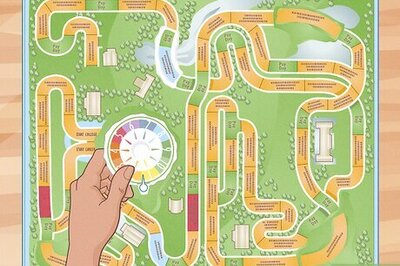
views
BANGALORE: As the city began stretching her boundaries, little did the concerned authorities take into account the growing needs that her people could have — consumption of water being one of them. A number of borewells in the city have dried up in an attempt to quench the Bangalorean’s thirst, resulting in dangerous low levels in the water table. Where once a upon a time digging a few feet sufficed the cause, today the depth has increased multifold, and now runs in hundreds of feet. Taking into account the diminishing levels, one of the main aims of the Palike this year is to implement rain water harvesting and percolate the water into the ground to replenish the ‘dryness’. The Palike is leaving no stone unturned to set a good example. “Two roof storage tanks have been commissioned, that can store upto 50,000 litres and one lakh litres of water for reuse,” said Girishshetty, assistant executive engineer of multipurpose engineering division. To filter the suspended pollutants in the water, the Palike has created the conventional three tiered pit that comprises sand, jelly and grave. After filtration the water then gets collected in the sump, from which it is used for irrigating the gardens and for the toilets.“Apart from from the roof storage, we have also invested in surface storage (the fountain in the building is capable of accumulating 7.5 lakh litres of water and recharge pits. One pit has been commissioned while the other six are under construction,” he added.Despite the Palike’s effort to set the perfect example and encourage the city to invest in RWS, they have been unable to keep a tab on how many such mechanisms are actually in use. “We have sent out letters to all the large properties in all the zone. However, we do not have a systematic record of the agencies that are utilising RWS. Moreover, installing the percolation pits in open spaces is an expensive propaganda, as a result there are a few wards that have not been able to implement it,” said Raja Simha, technical advisor to the commissioner.Speaking of the percolation pits Simha informed that there are various methods of percolating rain water into the ground. Open or deep well is constructed in open spaces. “Deep wells are dug in which a porous concrete tube is inserted. The holes in these tubes are also known as ‘weeping pores’. Meanwhile eight inches of rubble is also inserted along the tube which increases the percolation. These kinds of pits help in recharging the water level. Many borewells have been healed like this,” he said. While in Mahedevapura ten parks have been installed with percolation pits out of 19. In East zone the sanctioned limit for the number of pits is 160. “However we have completed the construction of 85 pits successfully so far — most of them in parks and open spaces. We are looking forward to completing the construction of all pits in about one and half months,” said chief engineer in charge, Krishnaswamy.The Palike has also shown a keen interest in building percolation pits around trees, also known as ‘Brick on edge’ on all major roads in the city. The concept requires a pit that is half foot deep to be dug around a tree. Since the cobble stones on the pavement around the trees were not allowing rain water to seep into the ground to provide water for the roots, many trees would get uprooted during rains. To avoid this the Palike had decided to construct these pits. Domlur Main Road bares testimony to their efforts.As far as implementing RWH is private buildings is concerned, according to a Palike official, “The Palike has been sending appeals to real estate builders, educational institutions and other organisations. Unfortunately we can’t arm twist them into installing RWS we can only request them.”


















Comments
0 comment